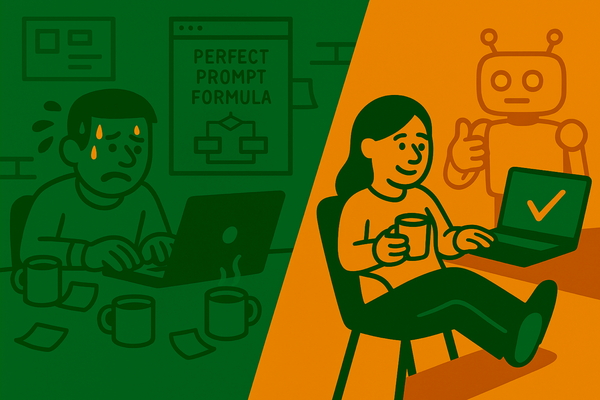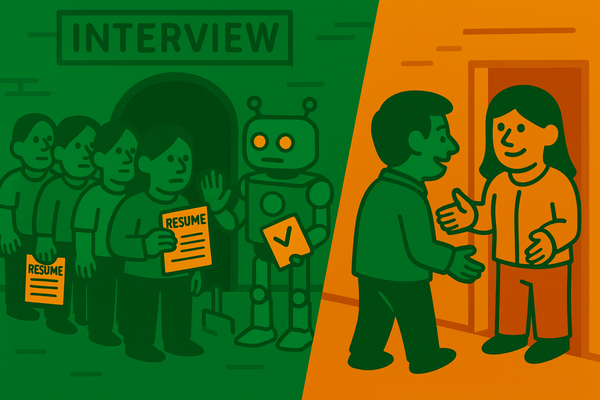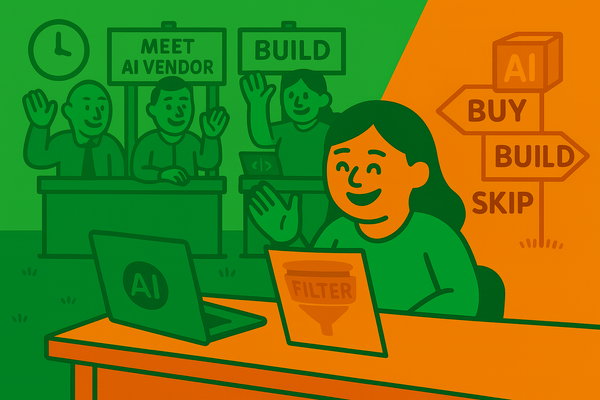[#4] AI Tool Hype Is Over. Strategy Wins Now.
Microsoft mandates AI use, entry-level jobs disappear, and the companies winning are running multi-agent workflows. Are you ready to compete at that level?
![[#4] AI Tool Hype Is Over. Strategy Wins Now.](/content/images/size/w1200/2025/07/ai-theater-vs-capabliity.png)

What’s inside this week
|
Just the Signals
1. Microsoft's AI-First Moves: Performance Reviews & LayoffsMicrosoft is making two major organizational moves: laying off 9,000 employees (4% of workforce), while also implementing AI usage as a factor in performance reviews. Internal memos state "using AI is no longer optional - it's core to every role and every level." The company is also restructuring to reduce middle management layers and increase individual contributor ratios. Source: Business Insider Why it matters Microsoft is reshaping around AI-augmented individual contributors vs. traditional management hierarchies. The performance review mandate makes AI adoption measurable across all roles. This shows how large organizations are evolving workforce models in the AI era. What to do now
Become an AI-augmented contributor. Document how AI tools make your work more effective for career positioning. |
2. Cloudflare's New Model Turns AI Content into Revenue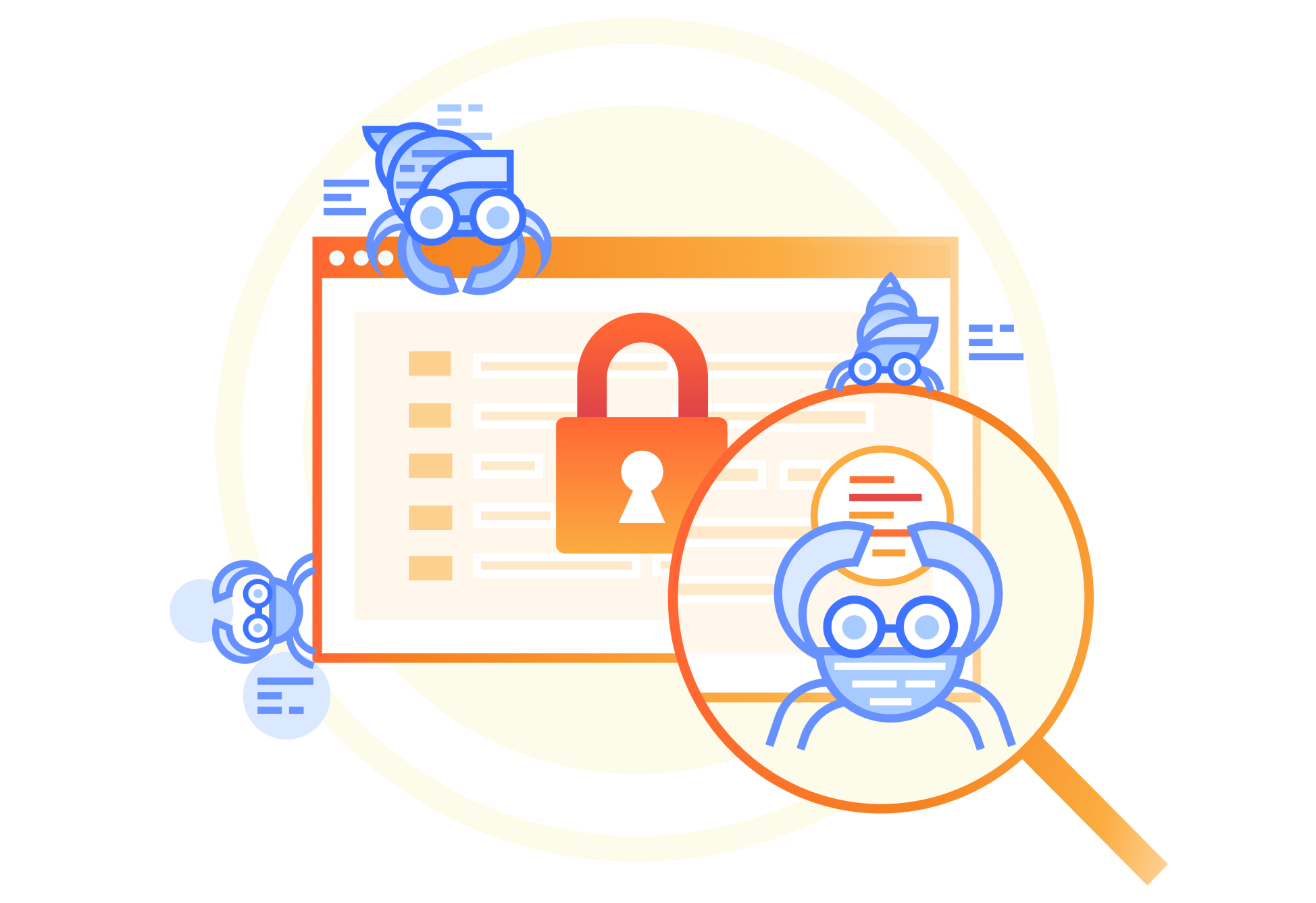
Cloudflare, which provides security and infrastructure services to about 20% of the internet, launched a pay-per-crawl model that lets website owners charge AI companies for training data access. This shifts the digital content value chain from traffic monetization to content licensing, giving creators leverage over how their work is used by AI systems. Source: Cloudflare Blog Why it matters
This rewrites the internet economy: What to do now
If you create digital content: audit your best-performing content and identify which pieces would be valuable as AI training data. |
3. Salesforce Says AI Handles 30-50% of Its Work
Salesforce CEO Marc Benioff revealed that AI systems now handle 30-50% of the company's engineering, coding, and customer service work with 93% accuracy. The company expects this percentage to grow as part of what Benioff calls the "digital labor revolution," with plans to deploy 1 billion AI agents on its platform by year-end. Source: PYMNTS Why it matters When major enterprise software companies share specific AI automation percentages, it sets market expectations and puts competitive pressure on peers. Salesforce is signaling that high AI adoption rates are becoming the new normal for tech companies. What to do now
Ignore the automation percentage race and focus on specific outcomes for your business. |
4. Google's Free AI Tools Signal Bigger Shift Coming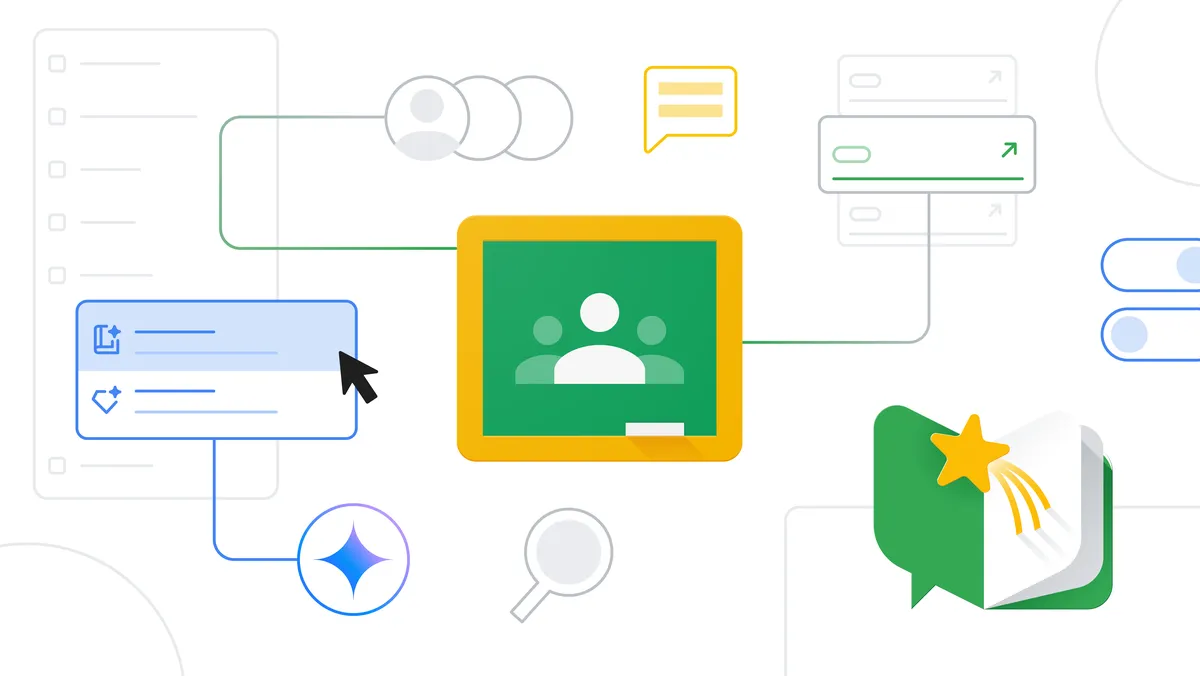
Google made its Gemini AI tools free for all educators with Google Workspace for Education accounts, offering over 30 features including lesson plan generation, quiz creation, and custom AI 'Gems' for student interaction. This education-first rollout follows a familiar tech playbook: democratize in education, then expand to other professional sectors. Source: Google Blog Why it matters Education serves as the testing ground for mass AI adoption. When Google gives teachers free AI tools, it's establishing patterns for how AI will democratize across other knowledge work sectors. This is the template: professional AI tools for routine cognitive tasks, starting with the most socially acceptable sector first. What to do now
Monitor AI tool announcements in education as early signals for your industry. |
5. UK Entry-Level Jobs Drop 32% Since ChatGPT Launch
Research by job search site Adzuna found UK entry-level job postings have fallen 32% since ChatGPT's launch in November 2022. The decline affects graduate jobs, apprenticeships, internships, and junior roles with no degree requirements. These positions now represent 25% of the UK job market, down from 28.9% in 2022. Source: The Guardian Why it matters While correlation doesn't prove causation, the timing provides a data point for measuring employment shifts in the AI era. Entry-level roles have historically been career stepping stones - their decline creates challenges for talent pipelines and workers trying to gain initial experience. What to do now
If you're early in your career: dive deep into AI tools and make this knowledge your point of differentiation. Learn to work alongside AI systems rather than competing with them. |
6. OpenAI Building $10M+ Enterprise Consulting Arm
OpenAI is developing a consulting division that charges enterprises at least $10 million to customize AI models and implementations. This move puts the AI leader in direct competition with consulting giants like Palantir and Accenture, signaling a shift from pure technology to full-service AI transformation. Source: Geekflare Why it matters AI is moving beyond the tool stage to require deep implementation work for actual ROI. When OpenAI starts competing with Accenture, it shows that AI value lies in customization and integration, not just access. They're becoming a comprehensive enterprise partner. What to do now
If you're planning enterprise AI adoption: evaluate whether you need professional implementation services. Budget for integration and change management, not just technology costs. |
Your Advantage This Week
How to Make AI Your Career Accelerator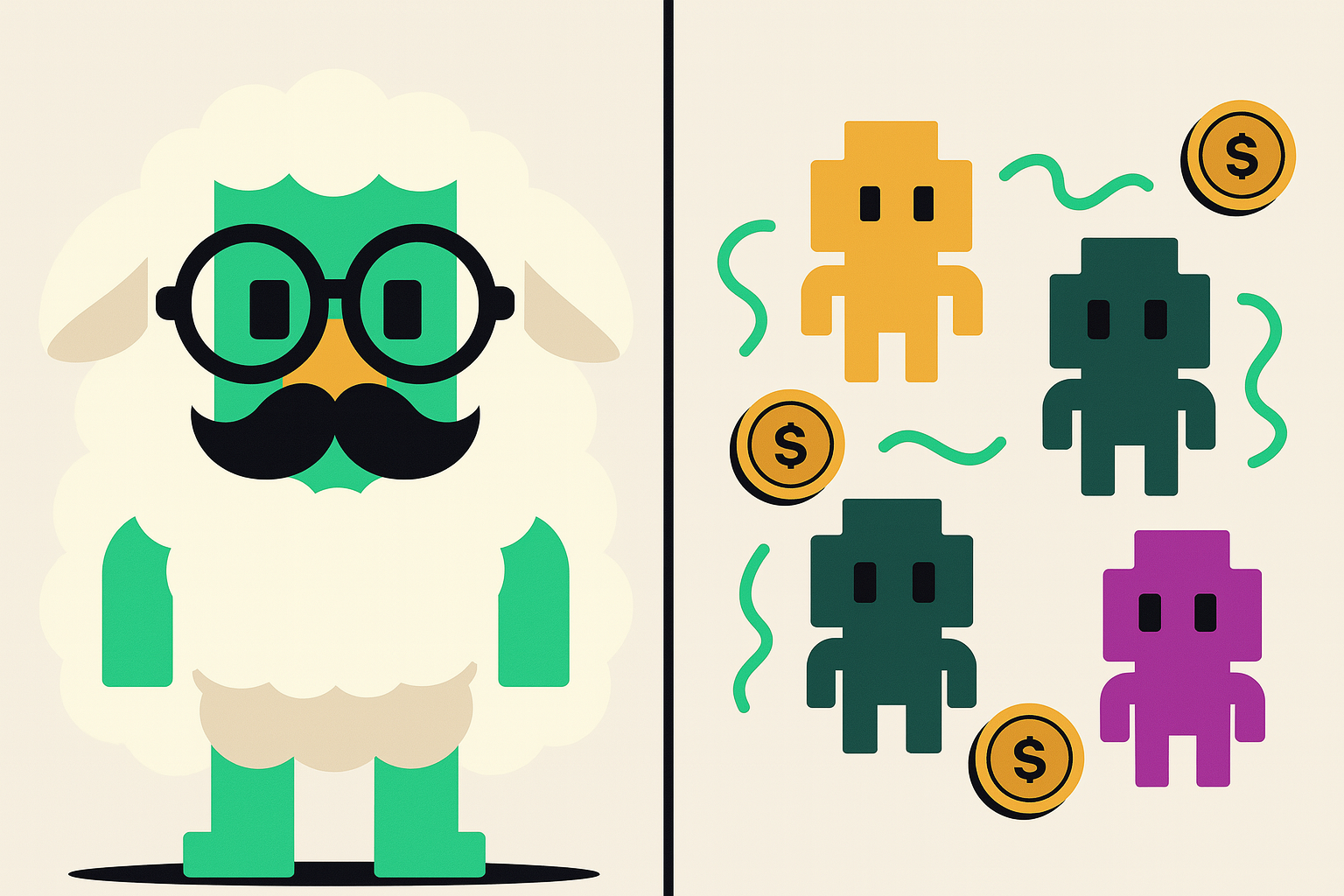
Here's the stat that changes everything: 78% of companies say they use AI, but only 1% say their efforts are mature (McKinsey, 2025). That 77% gap isn't a problem, it's your opportunity. Most organizations are in the AI theater era: running pilots, buying tools, announcing initiatives.
The shift toward AI capabilities is coming. Now is your window to position yourself as someone who can drive AI outcomes. AI Theater
Tool adoption without workflow redesign
Rolling out Copilot licenses without changing how teams work
Pilot projects that don't scale
AI chatbot handling 5% of inquiries, never expanding
AI initiatives disconnected from strategy
Innovation labs with no revenue/efficiency goals
Measuring "AI usage" instead of impact
Tracking tool adoption, not business outcomes
AI Capabilities
Reimagining workflows from ground up
Rebuilding customer onboarding: 2 weeks → 2 days
Connecting AI to strategic goals
AI inventory optimization tied to 15% waste reduction
Building systems that compound
Knowledge base gets smarter with each interaction
Measuring business outcomes
AI saves 40 hours/week, freeing team for strategy
Your positioning strategy:Position yourself on the capabilities side. While others focus on tools and pilots, you focus on outcomes and strategic integration. Here's how to do that:
1. Research your organization's AI approach
Check press releases, quarterly earnings calls, internal newsletters, all-hands presentations. What AI initiatives exist? What language do leaders use? Where are the capability gaps?
2. Learn the AI landscape
Understand current tools, what's actually possible vs. hype, and how AI connects to business outcomes.
3. Inject yourself into AI conversations
Volunteer for AI discussions, join committees, don't wait to be invited. Most "AI experts" are only a few months ahead of you.
4. Contribute strategically
Think bottom-up about new opportunities for better workflows. Focus on new systems, not just patching small solutions. Ask outcome-focused questions and connect AI projects to business goals.
Skip months of trial and error
The 5-Day AI Advantage Challenge positions you on the capabilities side now. Strategic AI thinking for non-technical professionals who want to lead transformation.
Join the 5-Day Challenge →
|
Trend to Watch
The Multi-Model AdvantageBox's 2025 State of AI report revealed that companies achieving >25% ROI from AI average three model providers, compared to just two for lower-ROI companies. This multi-model advantage is now getting technical backing: Japanese lab Sakana AI introduced AB-MCTS, an algorithm that lets different AI models collaborate on complex problems, with their combined performance outperforming individual models by 30%. Sources: Box State of AI Report | VentureBeat 
Why it matters The data shows that high-performing companies are building AI portfolios where different models handle different strengths. Sakana's research proves this approach works technically: one model generates ideas, another refines them, a third validates outputs. The competitive advantage comes from orchestration. What to do now Audit your current AI tool stack. Are you defaulting to one model for everything?
|
One More Thing
We’re Thinking Too Small About AIEveryone's excited about AI note-taking apps like Otter and Fireflies, but we're thinking too small. What if your AI agent could attend meetings for you… not to take notes, but to actually participate, make decisions, and report back? Picture this:
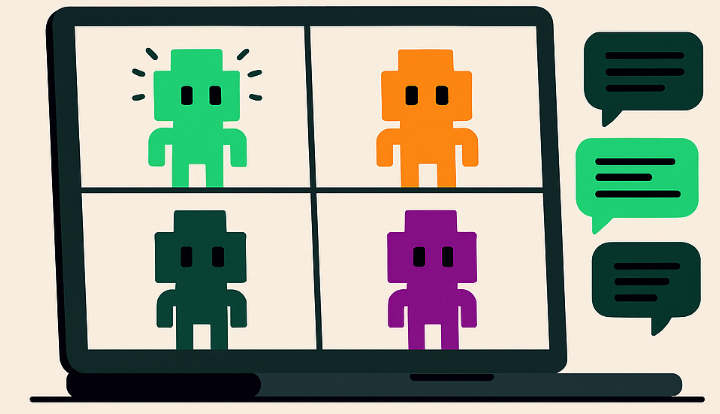
The bigger opportunity:
Start thinking:
|

Not a subscriber yet? Join here for weekly insights on AI, strategy, and the changing workplace.
Found this useful? Forward it to a teammate who’s figuring out AI too.


